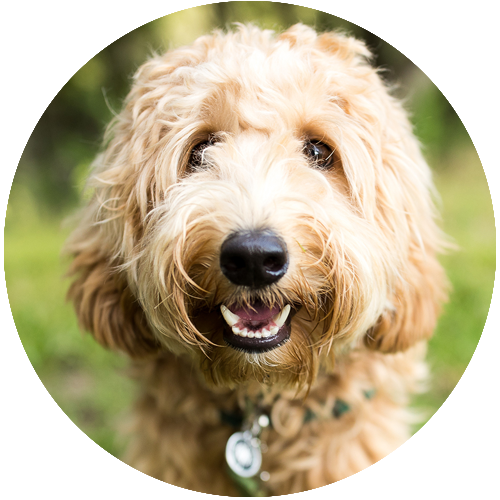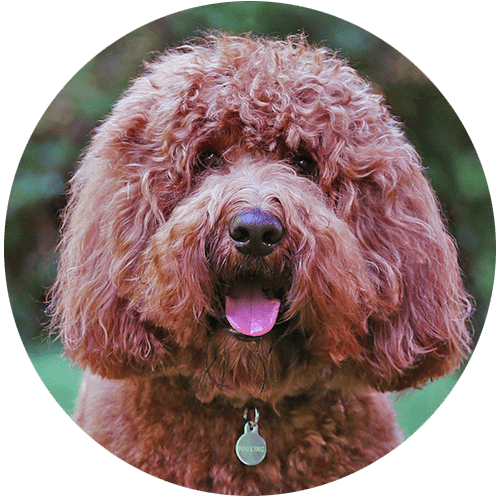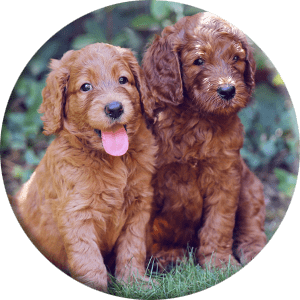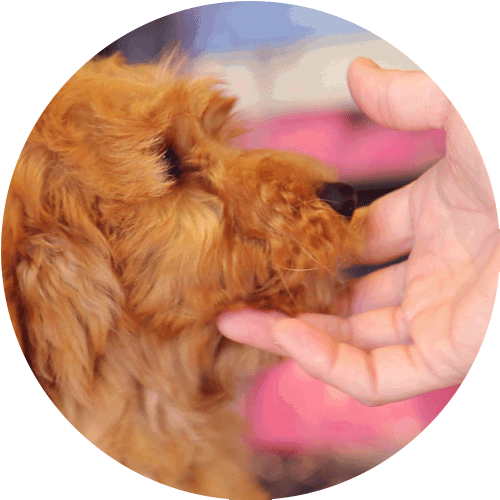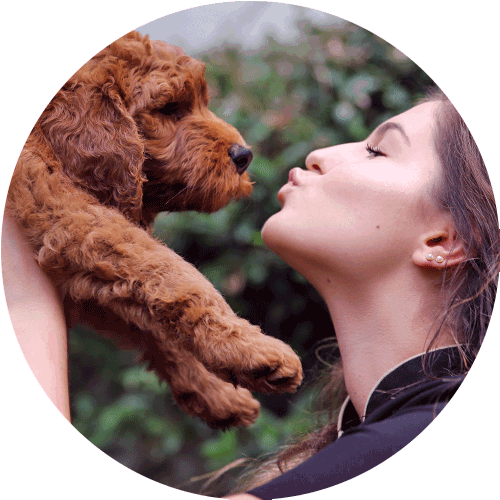|
|
|
|---|---|---|
General health |
★★★✩✩ | ★★★★★ |
Shedding intensity |
★★✩✩✩ | ✩✩✩✩✩ |
Suitable for people with dog allergies |
★★★✩✩ | ★★★★★ |
Energy level |
★★★★★ | ★★✮✩✩ |
Sizes |
Miniature / Medium / Standard | Miniature / Medium / Standard |
Adjustment to apartment living |
★★★✩✩ | ★★★★★ |
Meets breed expectations |
★★✩✩✩ | ★★★★★ |
Good temperament |
★★★✩✩ | ★★★★★ |
Able to be a therapy dog |
★★★★✩ | ★★★★★ |
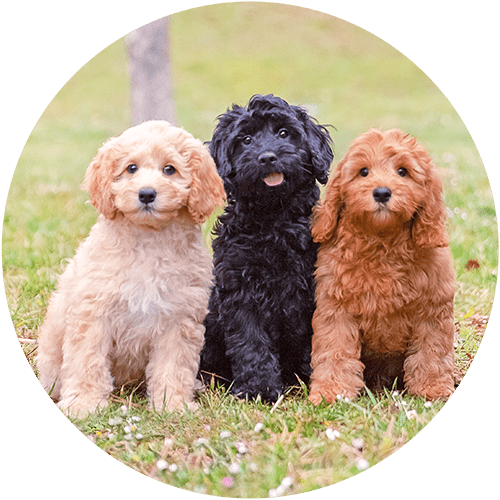
Not familiar with the Australian Cobberdog breed?
We can give you prices, availability and all the information you need for you to decide which breed best suits your lifestyleI WANT TO MEET MY PUPPY
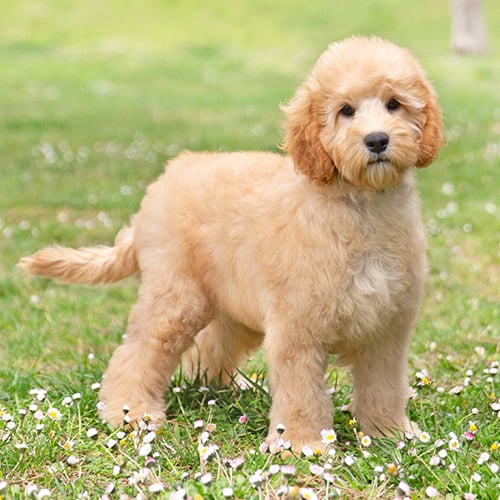
If you like Labradoodle, you're going to love the Australian Cobberdog
-
COAT:
If you like the coat of Labradoodle, the Australian Cobberdog has a super soft coat, which is easy to keep long and well-groomed, is hypoallergenic (Labradoodles can lose almost as much hair as Labrador Retrievers). The Australian Cobberdog also comes in gold, red, black, cream…. -
CHARACTER:
If you think the Labradoodle is the best companian dog, that's because you haven't met the character of the Australian Cobberdog yet. They are super affectionate dogs which are very sensitive to the feelings of their favourite humans. However, they are also super fun and very playful, although they tend to be more calm and less nervous than Labradoodle. -
PREDICTABLE CHARACTERISTICS:
The Labradoodle is a cross between a Poodle and a Labrador Retriever, while the Australian Cobberdog is an established breed. The Australian Cobberdog has a unique DNA sequence that remains stable through the generations. This is what maintains the characteristics of the breed in each litter and allows us to predict the aspects of future puppies. On the other hand, the Labradoodle does not have a unique DNA sequence of its own, meaning that any offspring may be different, making them an unpredictable breed (coat type cannot be guaranteed, whether they are hypoallergenic, what temperament they will have...).
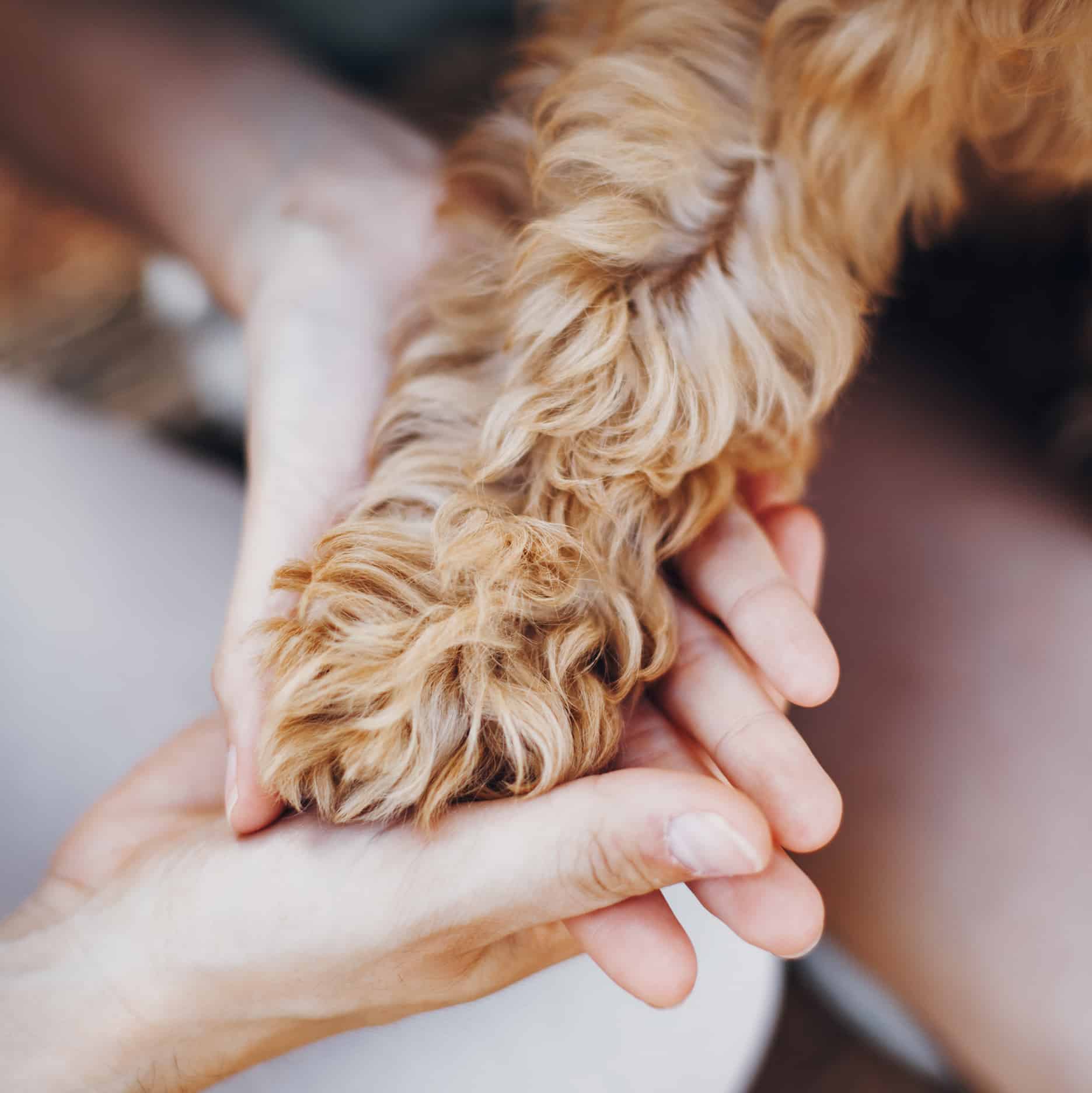
Families who already own an Australian Cobberdog are convinced
All the families who now own an Australian Cobberdog were in the same situation as you before they made their decision. Most had owned dogs before (50.3%) or had one around during childhood (29%) and were not familiar with the breed (73.5%). In fact, they were considering other breeds (70.2%) before settling on the Australian Cobberdog.However, now that these families know what it is like to live with an Australian Cobberdog, they have assured us that, if they were ever to consider getting another dog, it would be another Australian Cobberdog (92%). When we asked what they love most about their dogs, the majority responded with "their character and how affectionate they are" (84%). The majority of the families (91%) confirm that their expectations have been met with the Australian Cobberdog breed.
These are only some of the data extracted from the surveys that we carrying out for the families that have an Australian Cobberdog. However, the data is rather vague and difficult to grasp, which is the reason why we invite you to get to know us and experience what Australian Cobberdogs are really like. We are sure you will fall in love.
MEET YOUR FUTURE PUPPY
Leave us your details and we will get in touch to arrange a visit with our Cobberdog pack on whichever day suits you best.I WANT TO MEET MY PUPPY
THE 7 DIFFERENCES BETWEEN THE LABRADOODLE AND THE AUSTRALIAN COBBERDOG
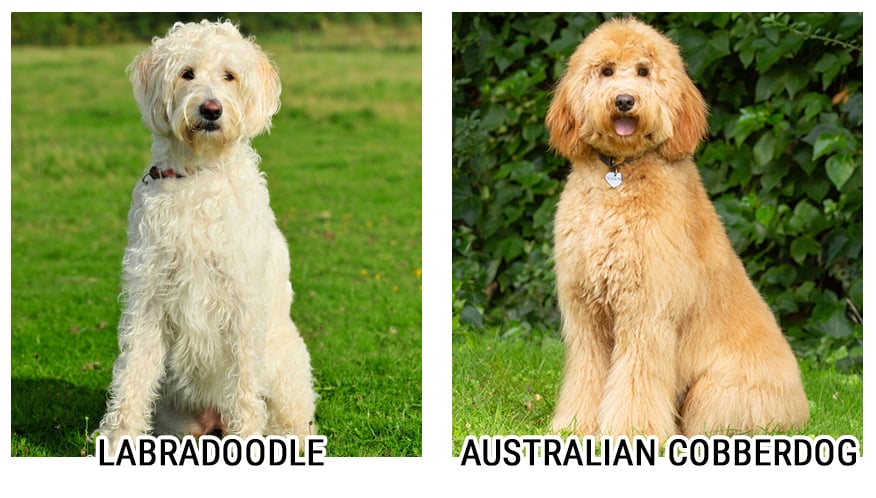
DIFFERENCE NO. 1: Predictable breed |
| LABRADOODLE: The Labradoodle is ultimately a cross between two breeds. The dog you get has the potential to display all the characteristics of a Poodle or Labrador Retriever that you wanted, or none of them at all. Genetics are the luck of the draw when left to chance without a clear breeding programme in place. AUSTRALIAN COBBERDOG: The Australian Cobberdog is a breed with a stable DNA profile, which makes it possible to predict the outcome of each puppy of the litter. |
DIFFERENCE NO. 2: Aspect |
| LABRADOODLE: It is very difficult to predict what a Labradoodle will look like and have a rough idea as to its appearance. They are supposed to look like Australian Cobberdogs, but due to the lack of consistency between breeders and due to them often being a direct cross between a Poodle and a Labrador Retriever, their coat may differ. Labradoodles can have wiry, smooth or even short fur. AUSTRALIAN COBBERDOG: Australian Cobberdogs tend to always look the same. They have a thick curly or wavy coat which is very soft to the touch. They give off the vibe of being a cuddly toy. |
DIFFERENCE NO. 3: Hypoallergenic coat |
| LABRADOODLE: Labradoodles are supposed to shed less since they are a cross between a Poodle and a Labrador Retriever, but this is far from the truth. At least in some cases. As it is a crossbreed and not an established breed, their coats can be unpredictable, with some Labradoodles shedding and some of them not. AUSTRALIAN COBBERDOG: The Australian Cobberdog has a wavy coat which has a soft and silky texture; our fingers should be able to glide through their fur with ease. The breed is hypoallergenic, meaning the dogs do not produce allergens. Their coats do not moult, nor do they shed or produce dander, so the home is free from dirt and allergens. |
DIFFERENCE NO. 4: Health |
| LABRADOODLE: Due to their great popularity, uninformed breeders began to crossbreed Poodles and Labradors, which led to a disastrous outcome for the health of the Labradoodle. The parent breeds, Poodles and Labradors, are known to suffer from common health problems. Labradoodles in the UK have a higher incidence rate (4.6%) of multifocal retinal dysplasia (MRA) when compared to Labrador Retrievers. AUSTRALIAN COBBERDOG: The main criteria for the breeding of the Australian Cobberdog is the selection of a temperament suited to both therapy and assistance and a hypoallergenic coat. Its development as a breed has been very well controlled from the beginning, meaning it has strong and healthy genetics. There are no congenital diseases associated with the breed. |
DIFFERENCE NO. 5: Temperament |
| LABRADOODLE: Labradoodles have an unpredictable nature, meaning it is often difficult to anticipate their behaviour. This boils down to them being a crossbreed where both the good and the bad characteristics of their parent breeds, the Labrador Retriever and the Poodle, may be present. Labradoodles can make great dogs, but they can also be dogs with a high level of energy just like Labrador Retrievers, or be anxious dogs just like Poodles. They may even show signs of nervousness just like Cocker Spaniels, another breed they have been crossed with to achieve the Labradoodle. AUSTRALIAN COBBERDOG: The Australian Cobberdog is a dog with a very docile and affectionate temperament. They enjoy being around family and love to be petted. Although they like to play, they do not constantly need this kind of attention. Calm family time combined with the occassional playtime is enough to keep them happy. |
DIFFERENCE NO. 6: Therapy dog |
| LABRADOODLE: Labradoodles can make good therapy dogs if they are carefully selected and display a confident and balanced temperament, as to avoid any aggressive reactions or anxiety, and as long as they are not nervous. It would be ideal to use a hypoallergenic Labradoodle but unfortunately they are not all hypoallergenic. AUSTRALIAN COBBERDOG: The Australian Cobberdog was designed to be the ideal therapy and assistance dog. Due to its hypoallergenic nature, even people with allergies can benefit from this therapy dog, since it does not shed allergens into the environment. It is a dog that continually looks you in the eye and has a gentle, cautious and respectful attitude. These dogs are very friendly in appearance given their resemblance to cuddly toys. |
DIFFERENCE NO. 7: Responsible breeding |
| LABRADOODLE: Labradoodles are now all the rage and there are many people who breed them with the sole aim of making a profit with no concern for the dog's genetics or welfare. We advise that you please avoid such breeders. AUSTRALIAN COBBERDOG: Here at our centre we have a breeding programme that guarantees that none of our dogs will be abandoned and we always take care of the welfare and genetics of all of our dogs. On top of that, we do everything legally, with contracts and transparent communication with our clients. |
| REQUEST INFORMATION ABOUT AUSTRALIAN COBBERDOG PUPPIES |
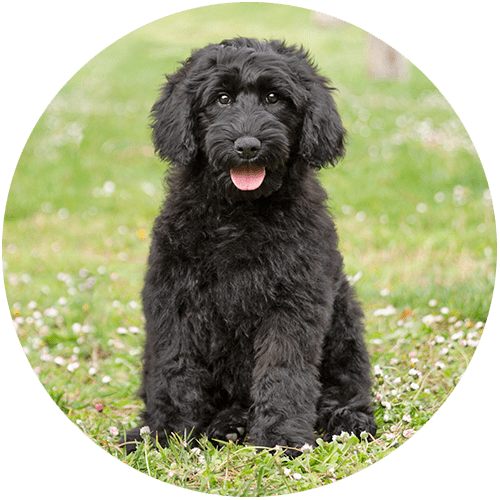
Do you have any questions?
We will be happy to answer any questions you may have about choosing the right breed for you and your lifestyle.We love to talk about dogs!
I HAVE A FEW QUESTIONS I WOULD LIKE YOU TO ANSWER
